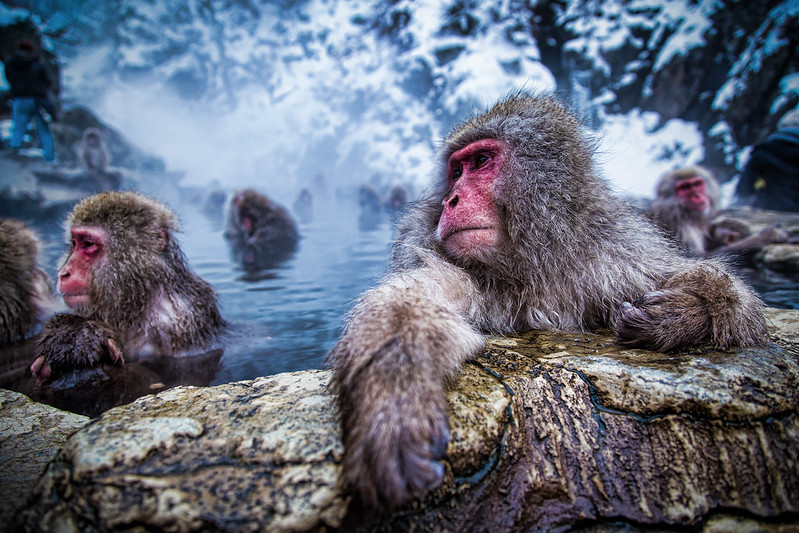
Take a Dip in a Hot Spring with the Japanese Macaque
Japan is one of the most beautiful island nations in the world. About 73% of the country is mountainous. Its mountain ranges run through Japan’s main islands and there is very little flatland. It’s no wonder that many of Japan’s mountains and hills are cultivated, sometimes even all the way to the tops of steep inclines. Because of the numerous mountains, the country is rich with natural hot springs (onsen) that multitudes of people enjoy. Do you know who also enjoys a good soak? The Japanese macaque!
Getting to Know the Japanese Macaque
 The Japanese macaque is known as saru (monkey) in Japanese but to distinguish it from other primates of the world, it is called Nihonsaru (Nihon means Japan in Japanese). The Nihonsaru are Old World monkeys, a group of primates that fall under the superfamily Cercopithecoidea and are indigenous to Japan. They are also known as “snow monkeys” because they live in areas where snow is prevalent throughout the year. No other type of primate, except for humans, can live in such climate conditions. The Japanese macaques have a distinct red face, short tail, and, brown-grey fur. They usually weigh about 33 pounds and stand about 2 feet tall. Their thick fur makes them look a lot bigger, though. They populate the mountainous areas of Japan and are considered an endangered species.
The Japanese macaque is known as saru (monkey) in Japanese but to distinguish it from other primates of the world, it is called Nihonsaru (Nihon means Japan in Japanese). The Nihonsaru are Old World monkeys, a group of primates that fall under the superfamily Cercopithecoidea and are indigenous to Japan. They are also known as “snow monkeys” because they live in areas where snow is prevalent throughout the year. No other type of primate, except for humans, can live in such climate conditions. The Japanese macaques have a distinct red face, short tail, and, brown-grey fur. They usually weigh about 33 pounds and stand about 2 feet tall. Their thick fur makes them look a lot bigger, though. They populate the mountainous areas of Japan and are considered an endangered species.
Hell’s Valley (Jigokudani) is one of the places best known for its bathing monkeys. About 250 Japanese macaques bathe in the steaming waters; the hot springs even have their own live camera site. These unique monkeys have been featured on Japanese stamps and are a popular sight among visitors wanting to share a hot dip with the main patrons of the hot springs.
Hot springs are especially inviting during the cold winter months. They are naturally clear, hot, and rich with minerals that have several health benefits.
Wouldn’t it be an added bonus to share a nice warm soak with these Japanese macaques to complete the experience?!

